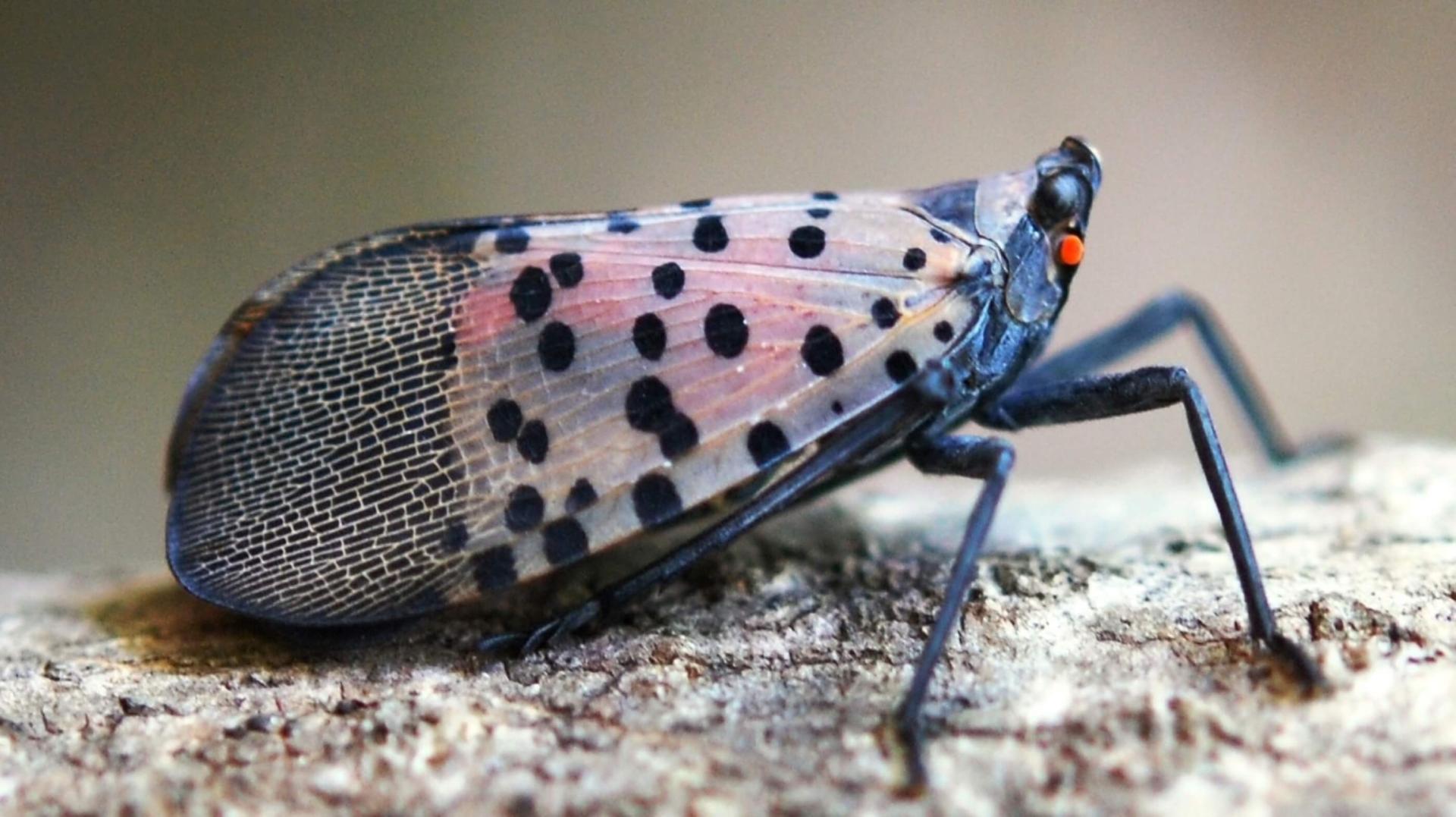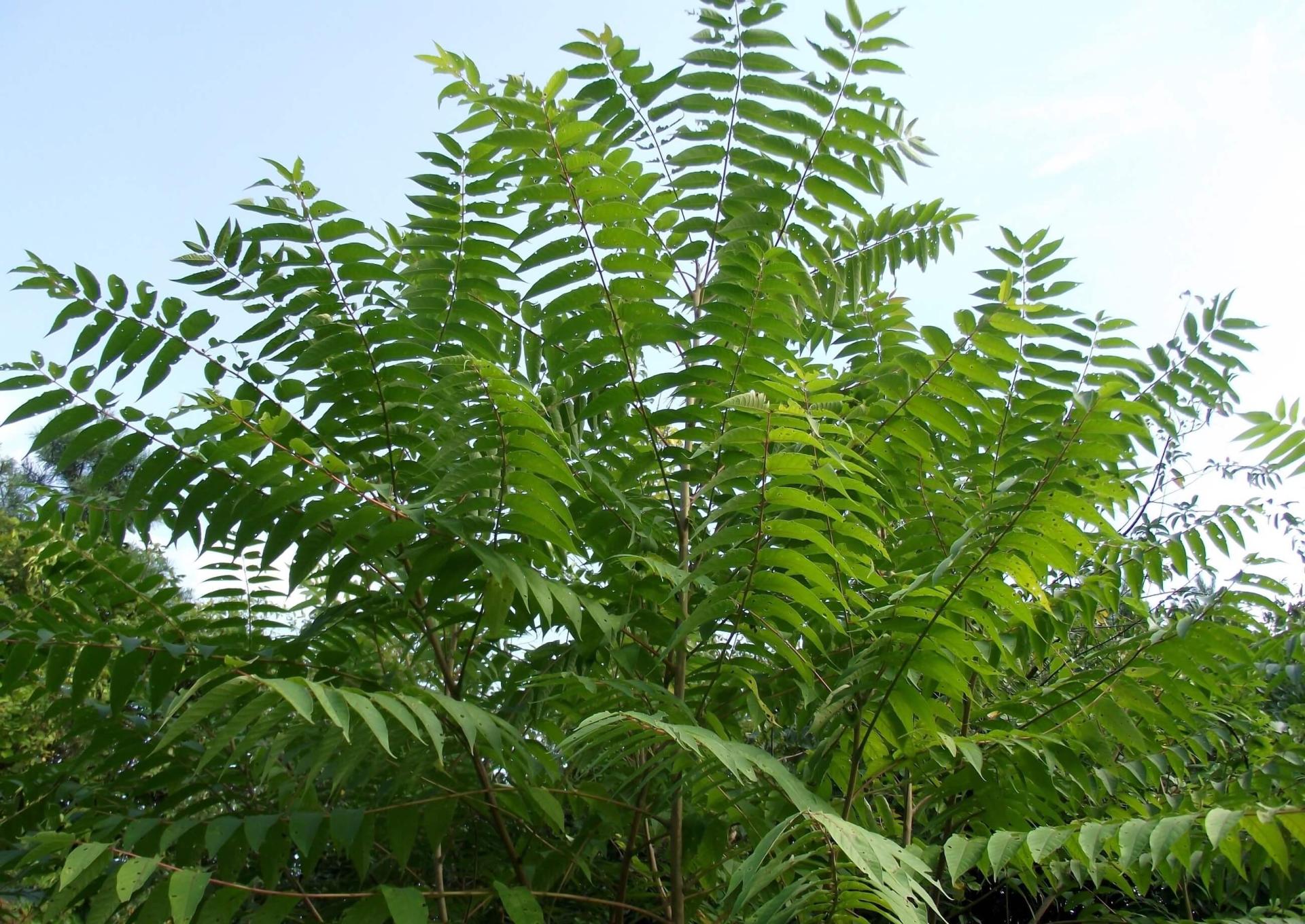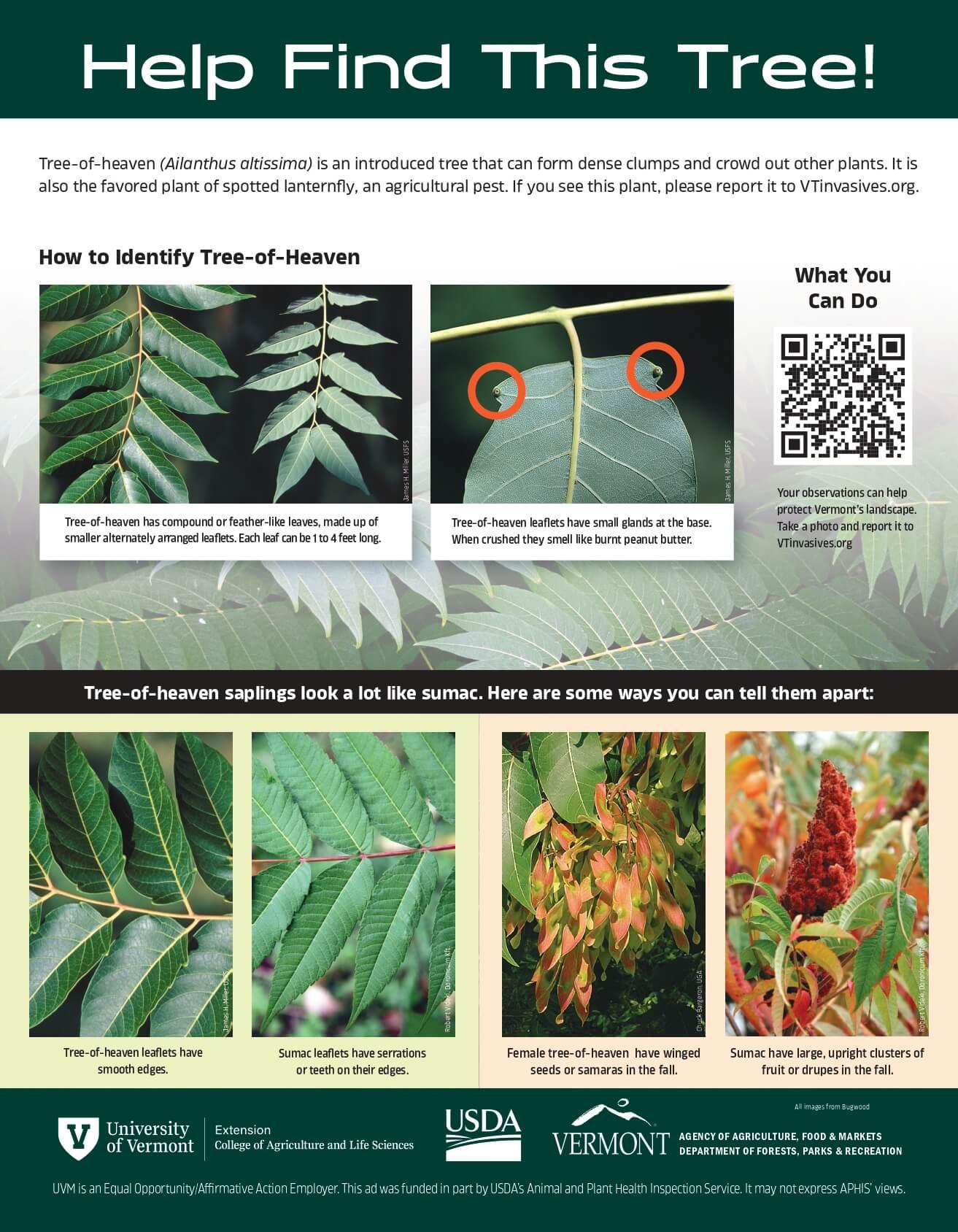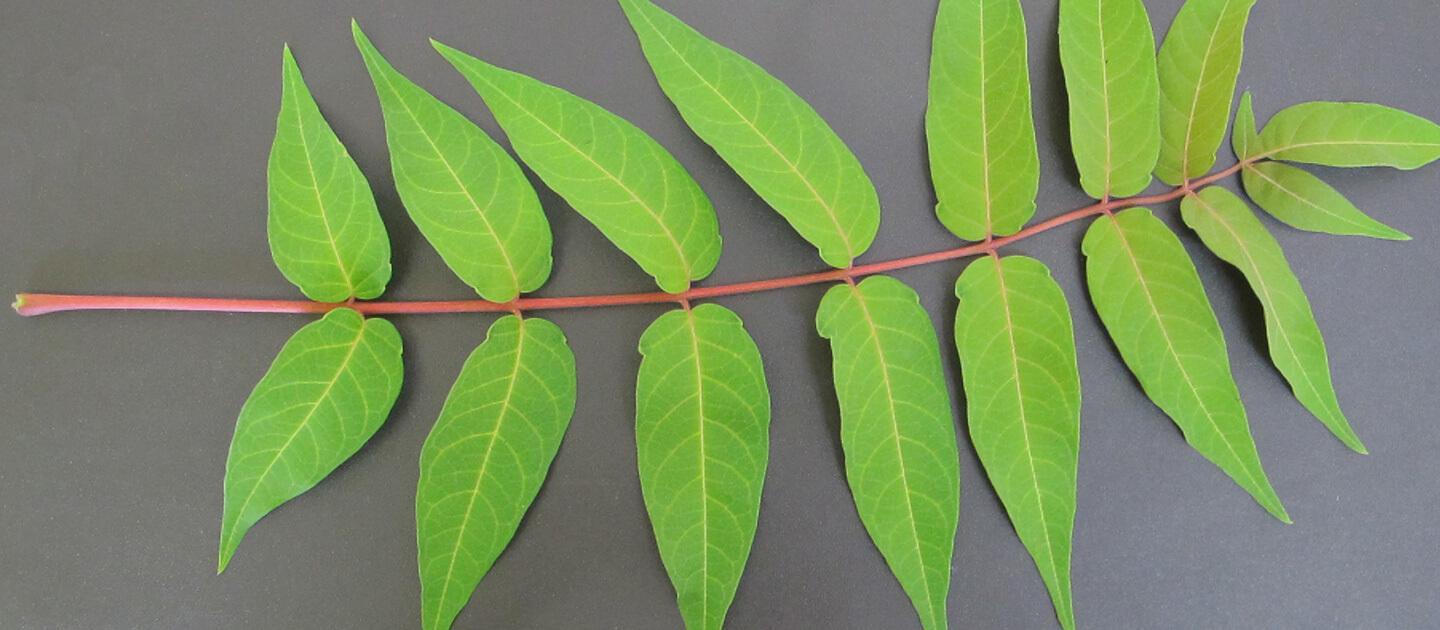Visitors on Vermont’s rail trails this summer will notice new signs asking for their help identifying a fast-growing introduced invasive tree called tree-of-heaven (Ailanthus altissima). This tree is the preferred host of the spotted lanternfly (Lycorma delicatula), an invasive sap-feeding insect that poses a serious threat to Vermont’s vineyards and recreation economy.

Tree-of-heaven grows rapidly in disturbed areas such as roadsides, railroad corridors and urban edges. It can be hard to tell apart from native lookalikes, such as sumac and black walnut, but learning to identify it is a key step in early detection of the spotted lanternfly, which has not yet become established in Vermont.
“We’re asking trail users to keep an eye out for tree-of-heaven and report any sightings to vtinvasives.org,” says Ginger Nickerson, forest pest education coordinator for University of Vermont Extension. “If we can find and map these trees, we can better monitor for spotted lanternfly and take quick action to prevent it from spreading into Vermont.”

How You Can Help:
- Learn how to identify tree-of-heaven using the information on the signs or by visiting vtinvasives.org.
- Report sightings by taking a picture and submitting it using the “ReportIT” link on the website.
- If you have been in an area with spotted lanternfly, check your vehicle before returning to Vermont. What appears to be a patch of mud may be an egg mass. Adults and nymphs also can hitchhike in cracks and crevices on vehicles.
“Together, we can protect Vermont’s landscapes and keep this invasive pest out,” Nickerson concludes. “Be alert, stay informed and enjoy Vermont’s wonderful rail trails!”
For help in identifying the tree-of-heaven, check out https://go.uvm.edu/tree-of-heaven. For more information about the spotted lanternfly and its feeding behavior and management, go to https://go.uvm.edu/lanternflies.
To request copies of the trail sign, contact ginger.nickerson@uvm.edu.

